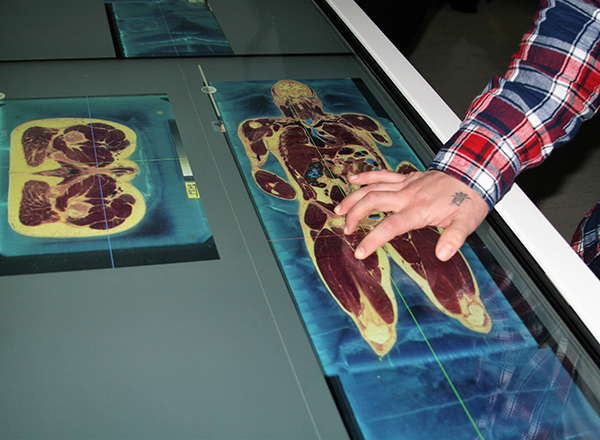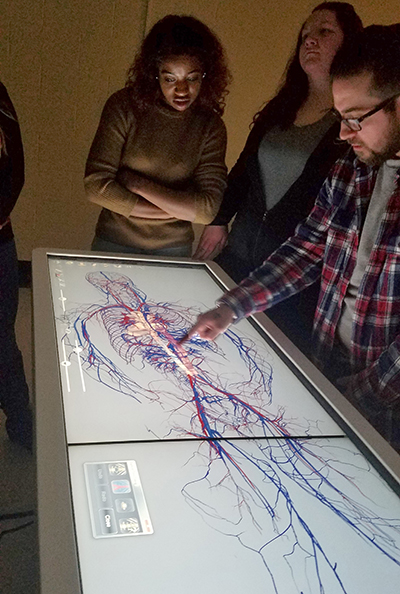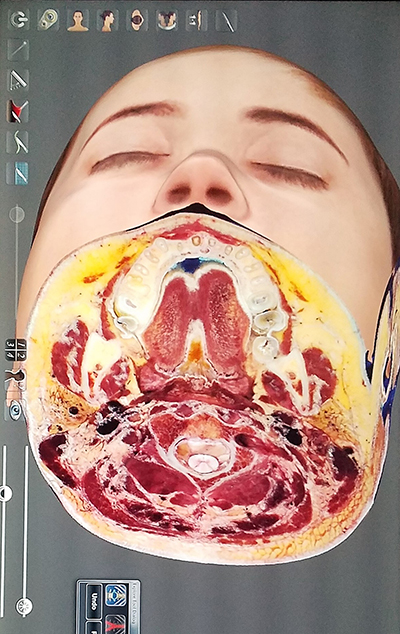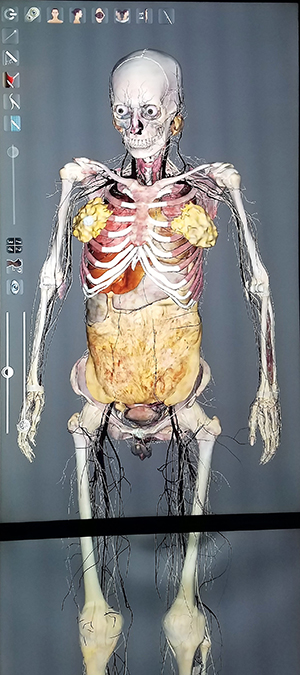Virtual Cadaver allows dissection without a body

The Henry Ford College (HFC) biology department installed a state-of-the-art Anatomage Table – a virtual cadaver – that has been integrated into its curriculum for the Winter 2018 semester.
 HFC is one of only five educational institutions in Michigan to provide an Anatomage Table, a virtual dissection system that allows students to perform an autopsy on a virtual cadaver. The Anatomage software delivers a high level of image detail that is not present in plastic anatomical models and sometimes even actual cadavers, since the organs and tissues of cadavers can become too degraded for dissection.
HFC is one of only five educational institutions in Michigan to provide an Anatomage Table, a virtual dissection system that allows students to perform an autopsy on a virtual cadaver. The Anatomage software delivers a high level of image detail that is not present in plastic anatomical models and sometimes even actual cadavers, since the organs and tissues of cadavers can become too degraded for dissection.
Why go virtual?
“Using actual human cadavers poses several challenges for us here at HFC, including regulations, recurring costs, and ethical issues for students,” said Carla Serfas, HFC biology instructor and faculty chair of the biology department. “Once a human cadaver is dissected, you can re-use it again in a limited way, but it degrades rapidly. This Anatomage technology enables us to use and re-use the same ‘cadaver’ indefinitely, without previous dissections affecting how students see the anatomical structures.”
How it works
 The life-size virtual cadaver – which can be switched from male to female, per the discretion of the instructor – can be viewed and manipulated from an endless combination of angles and through all tissue levels. Users can zoom in on areas of interest to the level of individual vascular structures and can slice through any combination of muscle and bone with the swipe of a single finger, as opposed to a scalpel.
The life-size virtual cadaver – which can be switched from male to female, per the discretion of the instructor – can be viewed and manipulated from an endless combination of angles and through all tissue levels. Users can zoom in on areas of interest to the level of individual vascular structures and can slice through any combination of muscle and bone with the swipe of a single finger, as opposed to a scalpel.
One advantage of the Anatomage technology is that a mistake in the dissection process can be undone immediately. At the end of each lesson, the virtual cadaver can be reset to its original state. Also, whatever is being done on the Anatomage Table can be projected on classroom monitors, allowing students to clearly see what is being done during a demonstration.
Better than a body?
“The purpose of the Anatomage Table is to give students a more realistic idea of how the human body is put together and how it works,” said Serfas. “Plastic models can only do so much. Another benefit to students is the opportunity to perform dissections without the smell or the mess of dissecting an actual cadaver. It allows us and our students to keep up with the latest cutting-edge medical technology. Anatomage technology is used in leading hospitals throughout the nation.”
 The Anatomage Table was funded by a grant through the HFC Technology Investment Fund (TIF).
The Anatomage Table was funded by a grant through the HFC Technology Investment Fund (TIF).
“The Anatomage Table is a valuable resource to our students, especially those who are preparing for future careers in the healthcare field as doctors, nurses, or other practitioners,” said Serfas. “The adoption of this technology will also increase the College’s chances of recruiting and preparing high-quality, future-driven applicants to our existing programs.”